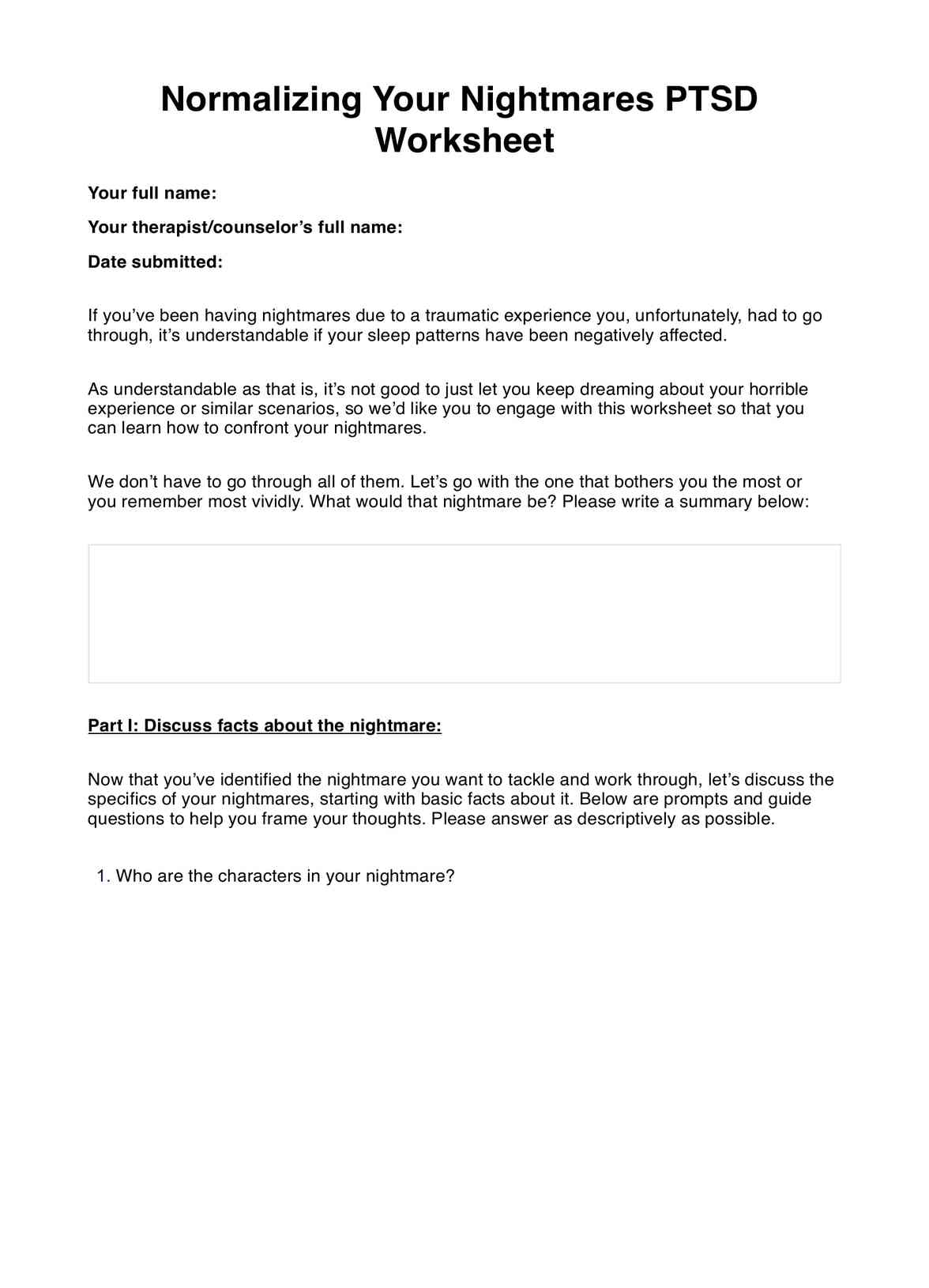It depends on the person. Based on the instructions, the worksheet shouldn’t be challenging to accomplish. What might cause difficulty is thinking about the nightmares. These cause PTSD patients distress, and thinking about their nightmares might make them uneasy since they will likely remind them of their traumatic experiences.
It would be best to give them the time, space, support, and assurance they need to answer each part.












